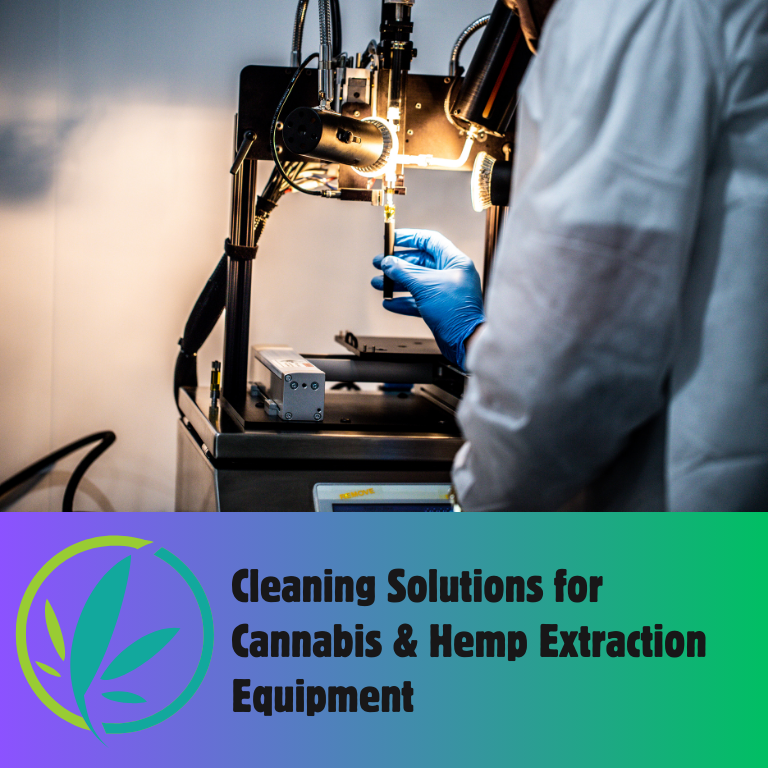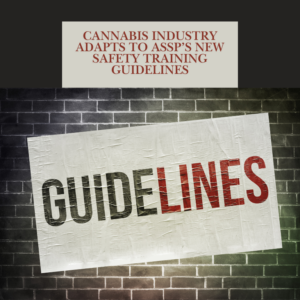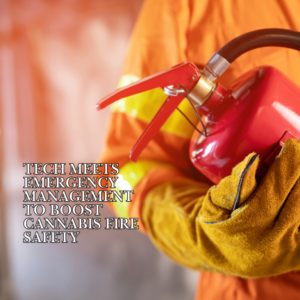Cleaning Solutions for Cannabis & Hemp Extraction Equipment

Introduction to Cleaning Solutions for Extraction Equipment
Cannabis and hemp extraction is a critical process that involves sophisticated equipment. Maintaining this equipment through proper cleaning is essential to ensure optimal performance, quality of the final product, and compliance with regulatory standards. This article delves into the comprehensive cleaning solutions tailored for cannabis and hemp extraction equipment, covering various techniques, products, and best practices.
Why Cleaning is Crucial in Cannabis & Hemp Extraction
Maintaining cleanliness in cannabis and hemp extraction equipment is paramount for several reasons. First, it ensures the purity and quality of the extracted product, free from contaminants that could compromise its effectiveness. Secondly, regular cleaning maintains the efficiency of the equipment, preventing breakdowns and extending its lifespan. Furthermore, adherence to strict hygiene protocols is necessary to comply with health and safety regulations.
Types of Extraction Equipment
CO2 Extraction
CO2 extraction is a popular method due to its ability to produce high-quality extracts without the use of harsh solvents. However, CO2 extraction equipment can accumulate residues that require regular cleaning to maintain efficiency.
Ethanol Extraction
Ethanol extraction involves using ethanol as a solvent to extract cannabinoids and terpenes. The equipment used in this process can develop ethanol residues and other contaminants, necessitating thorough cleaning protocols.
Hydrocarbon Extraction
Hydrocarbon extraction uses solvents like butane or propane. While effective, this method requires meticulous cleaning to remove any residual hydrocarbons and plant materials, ensuring safety and product purity.
Common Contaminants in Extraction Equipment
Residual Solvents
During extraction, solvents such as ethanol or butane can leave behind residues that need to be thoroughly cleaned to avoid contamination of future batches.
Plant Material Buildup
Plant materials can accumulate in extraction equipment, leading to clogs and reduced efficiency. Regular cleaning is essential to remove these buildups.
Microbial Contamination
Microbial contamination is a risk in any extraction process. Proper cleaning and sterilization protocols are necessary to prevent the growth of bacteria and mold in the equipment.
Selecting the Right Cleaning Agents
Choosing the right cleaning agents is crucial for effectively maintaining extraction equipment. The cleaning agents must be compatible with the materials of the equipment and capable of removing the specific residues present.
Compatibility with Equipment
Ensure that the cleaning agents used do not corrode or damage the extraction equipment. It is essential to use products that are specifically designed for the materials of your machinery.
Effectiveness on Different Residues
Different residues require different cleaning agents. For instance, solvents may be needed to remove residual oils, while microbial contaminants might require sterilizing agents.
Cleaning Techniques for CO2 Extraction Equipment
Solvent-Based Cleaning
Using solvents to dissolve and remove residues is a common method for cleaning CO2 extraction equipment. This involves circulating solvents through the system to break down and wash away contaminants.
Mechanical Cleaning
Mechanical cleaning involves using brushes and other tools to physically remove residues from the equipment. This method is often used in conjunction with solvent-based cleaning for thorough results.
Ultrasonic Cleaning
Ultrasonic cleaning uses high-frequency sound waves to create microscopic bubbles that effectively clean intricate parts of CO2 extraction equipment. This technique is particularly useful for hard-to-reach areas.
Cleaning Techniques for Ethanol Extraction Equipment
Solvent Recovery Systems
Using solvent recovery systems helps in cleaning by recycling the ethanol, thus reducing waste and costs. These systems are efficient in cleaning the equipment while recovering valuable solvents.
Flushing Protocols
Flushing the system with clean ethanol or other appropriate solvents ensures that residues are removed from all parts of the equipment. Detailed flushing protocols need to be followed to achieve optimal cleanliness.
Detailed Procedures
Detailed cleaning procedures should be established and followed meticulously. These include disassembling the equipment, soaking parts in cleaning agents, and thoroughly rinsing and drying them before reassembly.
Cleaning Techniques for Hydrocarbon Extraction Equipment
Safety Considerations
Hydrocarbon solvents are highly flammable, so safety is paramount when cleaning hydrocarbon extraction equipment. Proper ventilation and use of non-sparking tools are essential.
Effective Solvents
Using the right solvents is crucial for cleaning hydrocarbon extraction equipment. Solvents should be effective in dissolving residues but safe to handle and use.
Step-by-Step Process
A detailed step-by-step cleaning process should be developed, including disassembly, soaking, scrubbing, rinsing, and reassembly. Each step ensures thorough cleaning and prevents contamination.
Environmental and Safety Considerations
Handling cleaning chemicals requires attention to environmental and safety regulations. Proper disposal of waste and use of personal protective equipment (PPE) are crucial to ensure safety and compliance.
Developing a Regular Cleaning Schedule
Frequency of Cleaning
The frequency of cleaning depends on the usage and type of extraction process. Regular cleaning schedules help maintain equipment efficiency and product quality.
Signs Equipment Needs Cleaning
Understanding the signs that equipment needs cleaning, such as reduced efficiency or unusual noises, can prevent bigger issues and ensure consistent performance.
Tools and Accessories for Cleaning Extraction Equipment
Brushes and Specialized Tools
Using the right tools, such as brushes and specialized cleaning implements, can make the cleaning process more effective and less time-consuming.
Personal Protective Equipment (PPE)
PPE is essential when handling cleaning agents and equipment. This includes gloves, masks, and protective clothing to ensure the safety of personnel.
Role of Preventive Maintenance in Extraction Equipment Cleaning
Preventive maintenance goes hand-in-hand with cleaning. Regular inspections, replacing worn parts, and calibration checks ensure that the equipment remains in optimal condition.
Innovative Cleaning Technologies
Automated Cleaning Systems
Automated cleaning systems can enhance efficiency and consistency in cleaning extraction equipment. These systems can be programmed to clean at regular intervals with minimal human intervention.
Eco-Friendly Cleaning Agents
The use of eco-friendly cleaning agents is becoming more prevalent. These agents are effective in cleaning while being safe for the environment and operators.
Training Staff on Cleaning Protocols
Training staff on proper cleaning protocols ensures that they understand the importance of cleanliness and know how to effectively clean the equipment.
Importance of Training
Proper training ensures that all staff members are competent in cleaning techniques, which helps in maintaining equipment and ensuring product quality.
Effective Training Methods
Hands-on training, detailed manuals, and regular refresher courses are effective methods to ensure that staff are knowledgeable and skilled in cleaning protocols.
Documentation and Record-Keeping
Keeping detailed records of all cleaning activities is essential for compliance and quality assurance. Documentation ensures that all procedures are followed correctly and can be audited if necessary.
Challenges in Cleaning Extraction Equipment
Difficult-to-Clean Components: Some components of extraction equipment are more challenging to clean than others. Identifying these components and developing specialized cleaning protocols is essential.
Dealing with Stubborn Residues
Stubborn residues can be difficult to remove. Using the right combination of solvents and mechanical cleaning can effectively tackle these challenges.
Solutions for Cleaning Difficult Components
Disassembling Equipment: Disassembling equipment allows for a more thorough cleaning of all parts. This method ensures that every component is cleaned and inspected.
Specialized Solvents
Using specialized solvents designed to dissolve specific residues can enhance the cleaning process, making it more effective.
Mechanical Aids
Mechanical aids, such as ultrasonic cleaners and high-pressure washers, can be used to clean difficult components more effectively.
Cost-Effectiveness of Cleaning Protocols
Balancing the cost of cleaning with its benefits is crucial. Effective cleaning protocols can lead to long-term savings by extending the life of equipment and ensuring product quality.
Balancing Cost and Efficiency
Implementing cost-effective cleaning solutions without compromising on efficiency is essential for sustainable operations.
Long-Term Savings
Investing in proper cleaning protocols can lead to long-term savings by reducing downtime, preventing equipment damage, and ensuring consistent product quality.
Future Trends in Cleaning Solutions for Extraction Equipment
Emerging Technologies: New technologies are continuously being developed to improve the cleaning of extraction equipment. These innovations aim to make cleaning more efficient, effective, and environmentally friendly.
Sustainable Practices
Sustainable cleaning practices are becoming more important. The use of eco-friendly agents and techniques that reduce water and chemical use are trends that will continue to grow.
Maintaining cleanliness in cannabis and hemp extraction equipment is essential for ensuring product quality, equipment efficiency, and regulatory compliance. By understanding the various cleaning techniques, selecting appropriate cleaning agents, and adhering to regular cleaning schedules, operators can achieve optimal performance from their extraction equipment. Investing in proper cleaning protocols and training staff effectively will lead to long-term benefits, including cost savings and improved product quality.











